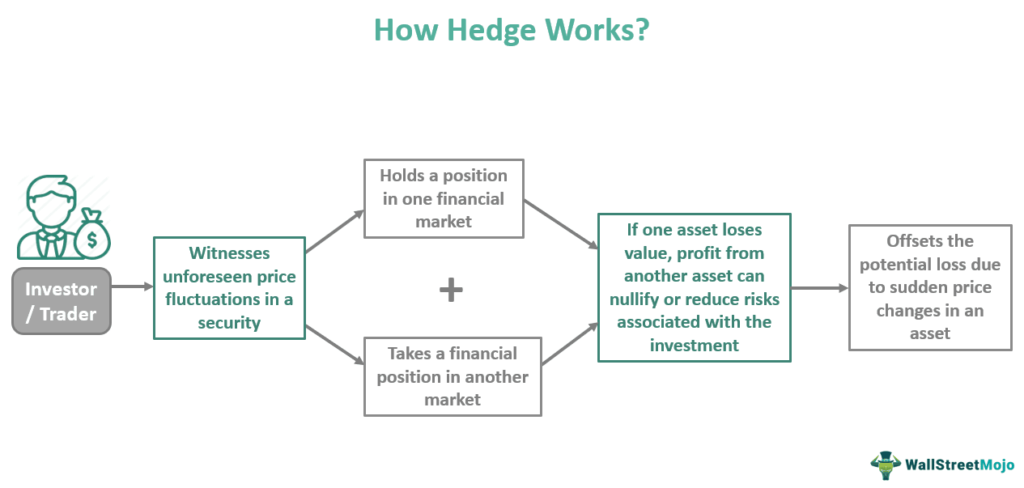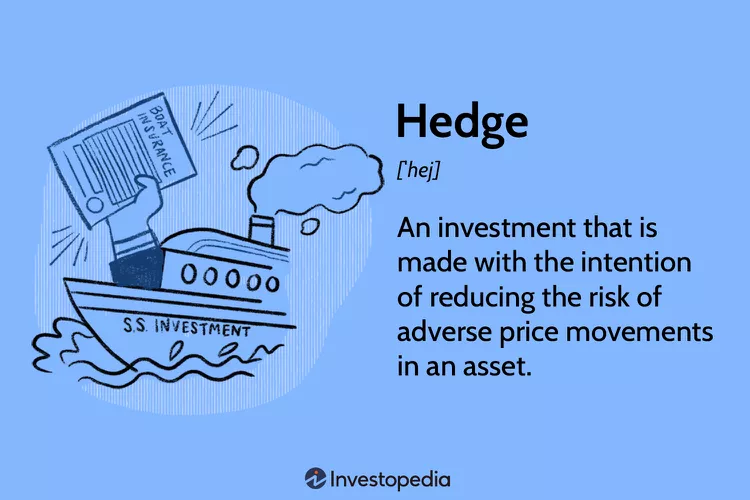Why Hedging is Essential?
Blogs
There are various types of hedging strategies that investors and companies can employ to protect themselves against potential losses…[..]
:: In the world of finance, hedging is a strategy that has gained significant popularity among investors and companies alike. It is a technique used to manage risks by offsetting potential losses from one investment with gains from another. Hedging is a powerful tool that enables investors and companies to protect themselves against unforeseen events, such as market volatility or economic downturns. In this blog, we will discuss the various types of hedging strategies, how they work, their benefits, and risks, as well as their applications in different industries. Whether you are a seasoned investor or just starting, understanding hedging can help you better manage your risk exposure and improve your financial outcomes.
Types of Hedging
There are various types of hedging strategies that investors and companies can employ to protect themselves against potential losses. Some of the most common types of hedging are:
Futures contracts – Futures contracts are agreements between two parties to buy or sell an asset at a predetermined price and date. By buying or selling futures contracts, investors can lock in the price of an asset and protect themselves against potential losses from price fluctuations.
Options – Options are contracts that give the holder the right, but not the obligation, to buy or sell an asset at a predetermined price and date. Investors can use options to protect themselves against potential losses from price fluctuations while still benefiting from potential gains.
Forward contracts – Similar to futures contracts, forward contracts are agreements between two parties to buy or sell an asset at a predetermined price and date. However, unlike futures contracts, forward contracts are not traded on an exchange, and the terms of the contract are negotiated between the parties.
Swaps – Swaps are agreements between two parties to exchange cash flows based on different financial instruments, such as interest rates or currencies. Swaps can be used to protect against potential losses from fluctuations in interest rates or currency exchange rates.
Natural hedging – Natural hedging involves offsetting potential losses from one investment with gains from another investment that is naturally negatively correlated. For example, a company that exports goods may be naturally hedged against currency fluctuations because when the value of the local currency decreases, the value of the exported goods increases.
By using these hedging strategies, investors and companies can manage their risk exposure and protect themselves against potential losses. However, it is important to understand the benefits and risks associated with each strategy before deciding which one to use.
How Hedging Works
Hedging works by offsetting potential losses from one investment with gains from another investment. To understand how hedging works, let’s consider an example.
Suppose you own a company that produces and sells widgets. Your business relies heavily on the price of raw materials such as steel and aluminum, which can be volatile and subject to price fluctuations. To protect your business against potential losses from a rise in the price of these raw materials, you could enter into a futures contract to buy the steel and aluminum you need at a fixed price in the future.
By entering into a futures contract, you are essentially locking in the price of the raw materials you need. If the price of steel and aluminum increases, you will be protected because you have locked in a lower price for these materials. On the other hand, if the price of steel and aluminum decreases, you will not benefit from the lower prices, but you will not suffer any losses either because you have already locked in a higher price.
Another example of hedging is using options. Let’s say you own a portfolio of stocks and are concerned that the market may experience a significant downturn. To protect your portfolio against potential losses, you could buy put options on the stocks in your portfolio. If the market does experience a downturn, the value of your portfolio will decrease, but the value of your put options will increase, offsetting some or all of your losses.
In essence, hedging allows investors and companies to manage their risk exposure by protecting themselves against potential losses from adverse market conditions. By using hedging strategies, they can reduce the impact of negative events on their portfolios or businesses and improve their overall financial outcomes.

Benefits of Hedging
Hedging offers a number of benefits to investors and companies, including:
Risk Management: Hedging helps to manage risk exposure by protecting against potential losses from market fluctuations. By using hedging strategies, investors and companies can limit their downside risk, thereby improving their overall financial outcomes.
Improved Financial Planning: Hedging helps investors and companies to plan their finances better. It enables them to lock in future prices of commodities, currencies, or stocks, which provides greater certainty for future cash flows and budgets.
Increased Confidence: Hedging gives investors and companies confidence in their investments and businesses. Knowing that they are protected against potential losses, they can focus on taking advantage of opportunities for growth and expansion without worrying about market risks.
Diversification: Hedging allows investors and companies to diversify their portfolios by spreading their risk across different investments. By using hedging strategies, they can reduce the impact of adverse market conditions on their portfolios and businesses.
Competitive Advantage: Hedging can provide a competitive advantage to companies. By locking in future prices of raw materials, currencies, or other inputs, they can offer more competitive pricing to customers and improve their profitability.
Overall, hedging is an important tool for investors and companies to manage risk and improve their financial outcomes. By using hedging strategies, they can protect themselves against potential losses and focus on growing their businesses with greater confidence.

Risks of Hedging
While hedging can offer benefits to investors and companies, it also carries certain risks. Here are some of the risks associated with hedging, they are:-
Costs: Hedging can involve costs, such as commissions, fees, and bid-ask spreads, which can eat into profits. Additionally, hedging instruments like futures and options have expiration dates, which means that investors and companies may need to continuously buy new contracts to maintain their hedging positions.
Over-Hedging: Over-hedging can occur when investors or companies use too much of their resources to hedge against potential losses. Over-hedging can limit potential gains if market conditions improve, and can even cause losses if the hedging positions are not managed properly.
Inaccurate Forecasting: Hedging requires accurate forecasting of market conditions. If market conditions turn out to be different from what was expected, the hedging positions may not be effective in protecting against losses.
Counterparty Risk: Hedging involves entering into contracts with other parties, such as brokers or banks. If the counterparty defaults on the contract, it can lead to significant losses for the investor or company.
Liquidity Risk: Certain hedging instruments, such as options and futures, can be illiquid and difficult to trade. If investors or companies need to unwind their hedging positions quickly, they may not be able to find a buyer or seller for their contracts.
While hedging can be an effective tool for managing risk, it is important for investors and companies to understand the potential risks involved. Proper risk management, accurate forecasting, and careful monitoring of hedging positions can help to mitigate these risks and improve the effectiveness of hedging strategies.

Uses and Applications
Hedging is a popular risk management strategy that is used by investors and companies to protect themselves against potential losses due to market fluctuations. It involves taking a position in an asset or a financial instrument that is negatively correlated with another asset or instrument, with the goal of offsetting potential losses.
There are various ways in which hedging can be applied:
Commodity Hedging: Companies that are exposed to price fluctuations in commodities, such as oil or gold, can use hedging to protect themselves against price changes. For example, a company that uses a lot of oil in its operations may choose to hedge against rising oil prices by buying oil futures contracts.
Currency Hedging: Companies that operate in multiple countries may be exposed to currency fluctuations that can affect their profits. Currency hedging involves taking positions in currencies or financial instruments that are negatively correlated with the company’s exposure to a particular currency. For example, a company that receives revenue in euros but has expenses in US dollars may choose to hedge its currency exposure by buying US dollar futures contracts.
Stock Hedging: Investors can use hedging to protect themselves against potential losses in their stock portfolios. For example, an investor who owns shares in a particular company may choose to hedge against potential losses by buying put options on the stock.
Interest Rate Hedging: Companies that have significant debt exposure may choose to hedge against interest rate changes that can affect their debt servicing costs. Interest rate hedging involves taking positions in interest rate futures or options to offset potential losses due to changes in interest rates.
Hedging with Derivatives: Derivatives, such as options and futures, are commonly used for hedging purposes. These instruments allow investors and companies to take positions in underlying assets or instruments without actually owning them, providing greater flexibility and liquidity.
Conclusion
In today’s volatile and unpredictable markets, hedging has become an increasingly important strategy for investors and companies to manage risk and protect themselves against potential losses. By taking positions in assets or instruments that are negatively correlated with their exposure to market fluctuations, they can offset potential losses and improve their financial outcomes.
Whether it’s commodity, currency, stock, or interest rate hedging, there are various ways in which hedging can be applied to suit different needs and situations. Additionally, the use of derivatives such as options and futures provides greater flexibility and liquidity in hedging strategies.
However, it is important to note that hedging also comes with potential risks and costs. It is crucial to carefully monitor and manage hedging positions to ensure that they are effective in achieving their intended goals.
Overall, hedging is a valuable tool for managing risk and protecting against potential losses in today’s complex financial markets.
